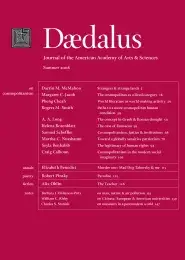The cosmopolitan as a lived category
Cosmopolitans, as French philosopher Denis Diderot put it in his encyclopedia of 1751, are “strangers no where in the world.”1 By the time Diderot wrote, the term had become a commonplace. Since then, the cosmopolitan has remained largely that–a term. As a result, the history of cosmopolitan language, the history of the idea, has been carefully and cogently written. Excellent accounts now exist of writers and philosophers, largely from the early modern period, who wrote idealistically and learnedly about the cosmopolitan.2 We know very little, however, about cosmopolitan practices, about actual behavior that might legitimately warrant the label, in any historical period, including our own. As long as wars have their day-to-day histories, and their antithesis remains an idea in search of an instantiation, the critics and defamers of the cosmopolitan will continue to point to its vapidity, its pie-in-the-sky, no-one-ever-went-to-war-under-the-flag-of-the-cosmopolite irrelevance.
Writing such a history of lived practices and habitudes requires sources, finding actual institutions or events that might legitimately be interrogated to reveal behavior reasonably described as cosmopolitan. For the period of the eighteenth century, when the cosmopolitan was used widely as a compliment, one way of proceeding might be to start off by sampling the behavior of those who did not value it. In early-modern Europe, an authoritarian–specifically clerical–vision of the way traditional society should behave existed. Take the Papal territory of Avignon, for example. The Roman Catholic Inquisition gave Avignon the distinction of being the only French-speaking city policed by an inquisition. The city’s inquisitional archives, lost up until 1677 and then mercifully complete up to 1790 (when the French revolutionaries took over the city), tell a tale of bizarre phobias and cruelties, along with a carefully cultivated pursuit of absolutist political goals, all in the service of the church. Indeed the Avignon authorities established a more prosecutorial atmosphere than their rather sluggish counterparts in Spain, Venice, and Naples.3
. . .
